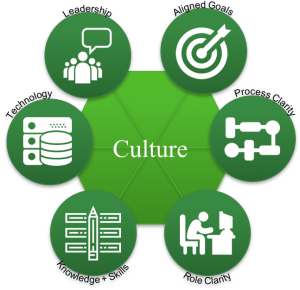If you’ve been in the workforce for at least three years, you have likely had at least one annual performance review (unless of course, you work for a firm that has abandoned the practice). As I began to draft this article, I was curious about what my colleagues had experienced in their annual reviews. Their stories are below:
“I wrote the entire review with no input from my manager who simply submitted it to HR after I sent it to him.”
“We set goals in January and didn’t look at them again for a year. By then, my job had changed so much that the goals didn’t make any sense.”
“I thought I was doing a great job and I’d be rated highly. My manager thought my work was sub-par. He told me for the first time at the annual review.”
“My manager indicated I’d be promoted if I accomplished specific goals. At the annual review, she agreed I had met or exceeded all of them. Then she told me that she had received feedback that my interpersonal skills were poor, so my promotion would be delayed. I have worked for this manager for two years. This was the first time she raised this issue.”
“My manager won’t talk to me about career development goals. He knows if I leave, he will have a hard time finding a replacement, so, he avoids the discussion.”
Do you recognize any of these stories? I suspect you or someone you know has experienced at least one of these scenarios.
A study by TinyPulse highlighted the primary reasons why managers and employees dislike the performance management process: it takes too much time, focuses on the negative, and doesn’t address issues in a timely manner.
However, it’s not just employees and their managers who dislike the process. A 2015 Deloitte study found that only 8 percent of HR respondents believed their performance management process drove business value. An HCI research study reported that only 39 percent agreed appraisals were effective at improving performance.
Those are stunning statistics. Clearly, a process that a) employees and managers dislike, b) doesn’t improve performance or c) doesn’t drive business value is ripe for change.
In 2011, Kelly Services replaced the annual review with real-time feedback and a focus on outcomes over process. Adobe quickly followed suit. These firms and the hundreds who followed implemented agile goal setting and ongoing feedback from multiple sources to align with their fast-paced collaborative environments. Moreover, these firms recognized the importance of retaining and growing talent and guided managers to shift the conversations from evaluating to enhancing the performance of their employees.
Performance Management Cautions
 Amidst the excitement about these “agile” or “dynamic” performance management approaches, numerous voices have cautioned companies about doing their due diligence before jumping on the performance management bandwagon.
Amidst the excitement about these “agile” or “dynamic” performance management approaches, numerous voices have cautioned companies about doing their due diligence before jumping on the performance management bandwagon.
These individuals appropriately remind us that an improved performance management approach requires not simply a new process, but also a suite of changes to ensure the new process is both successful short-term and sustainable long-term.
Based on the multitude of articles I’ve read on the topic, their recommendations fall into six areas:
Role modeling by leaders who continuously communicate the benefits of the new process and demonstrate how it works in practice;
Aligned and cascaded goals from the CEO to each business unit to ensure employees can connect their role to strategic business objectives;
Role clarity to ensure each actor in the process understands his/her accountabilities for successful performance management;
Skills for all employees on giving and receiving feedback, setting meaningful goals, and conducting challenging conversations;
Technology that enables managers and employees to record performance conversations and aid ongoing development and accountability for progress and outcomes;
If your organization is considering a move towards new performance management practices, pay heed to this excellent advice. However, also recognize that these suggestions largely gloss over the importance of workplace culture as the foundation of performance management. As noted in a blog post by David Hassell, “There have now been numerous studies showing the correlation between great culture and high performance, with one example showing that since 1998, Fortune’s 100 Best Companies To Work For (a decent proxy for companies with a strong culture) have outperformed the S&P 500 by 2to 1.”
Even with the best planning and project management, if the culture does not support the new performance management ecosystem, your organization will have a tough time making it work and stick.
Is your culture ready? Read on.
The Culture Factor
 Over the past 12 years, I have worked with nearly 100 firms of varying sizes and levels of HR maturity. Of the firms that implemented new performance management approaches, all had the same high-level goal: to grow their talent to meet current and future business needs.
Over the past 12 years, I have worked with nearly 100 firms of varying sizes and levels of HR maturity. Of the firms that implemented new performance management approaches, all had the same high-level goal: to grow their talent to meet current and future business needs.
Through my work with these firms, I have observed six cultural factors I believe are foundational to successful implementation and sustainability of a new performance management approach. As you read each description below, ask yourself if your organization exhibits these cultural attributes.
1. Agile business practices: The organization seamlessly and appropriately adjusts and adapts to shifting markets, customer needs, employee requirements and business demands.
2. Engenders Trust: Leaders provide resources enabling employees to develop and grow their capabilities. They guide managers to ‘catch their people doing something right’ instead of ‘something wrong’. Feedback is timely and constructive. Managers make it safe for employees to admit mistakes or development gaps.
3. Constructive: The organization promotes and rewards collaboration, sharing knowledge and building strong teams. Managers use feedback as mechanisms for growth and strengthening capabilities. Leaders promote and recognize adaptability and effectiveness.
4. Reflective: The organization encourages reflective behavior as a vehicle to learn from experiences and use failure as an opportunity to improve. Managers regularly allocate time at the conclusion of major projects to record lessons learned and identify improvement opportunities.
5. Diverse viewpoints: The organization encourages and embraces diverse points of view within and across teams. Leaders encourage open and honest dialogue among employees.
6. Growth Mindset: Leaders believe that employees can advance their abilities through dedication and hard work. Managers coach their employees to be lifelong and resilient learners who individually and collectively seek opportunities to grow.
Final Thoughts
Organizational culture is hard to change. It is the organization’s DNA and it affects how the workforce behaves, reacts and adjusts. If you are considering a change to your performance management practices, do it with your eyes open. Evaluate your culture critically and adapt your implementation so it will succeed. Look for subcultures that are more amenable to agile and dynamic approaches to pilot the new processes. Observe where the organization embraces the new methods and where it does not. Then, course correct and plan accordingly.
What takes one organization one year to adopt may take your organization several years. Watch, tweak, and improve as you go. Who knows; you may find that the new practices themselves help create a more robust and healthy culture that improves employee performance and your performance management process.

